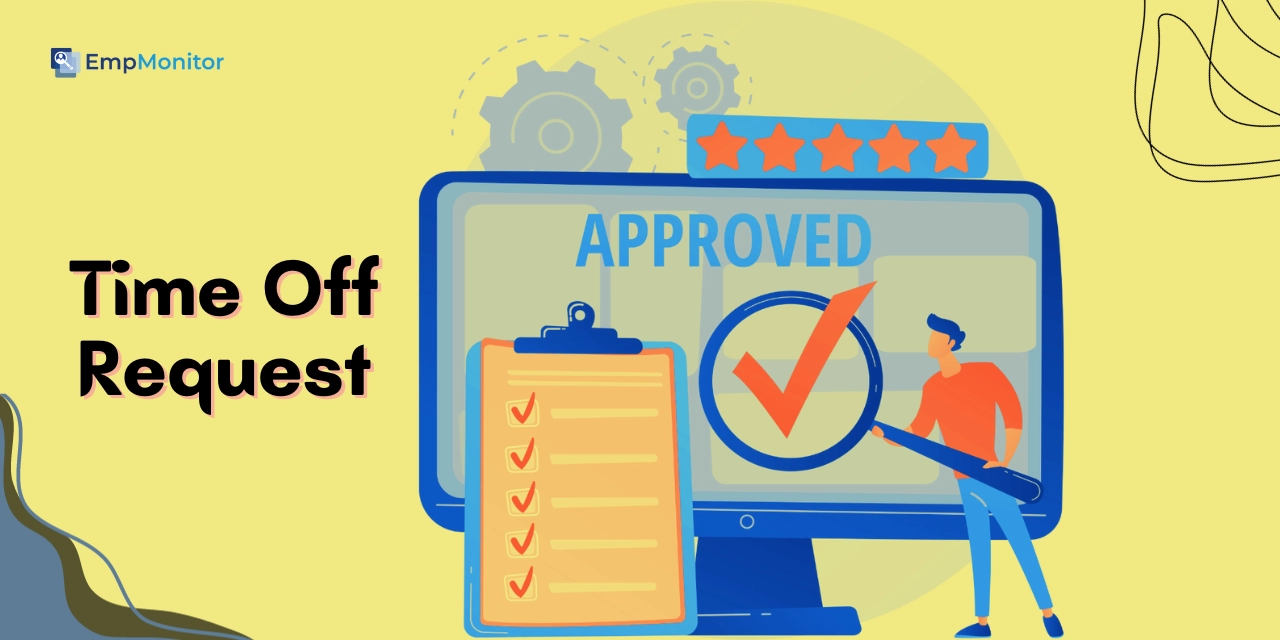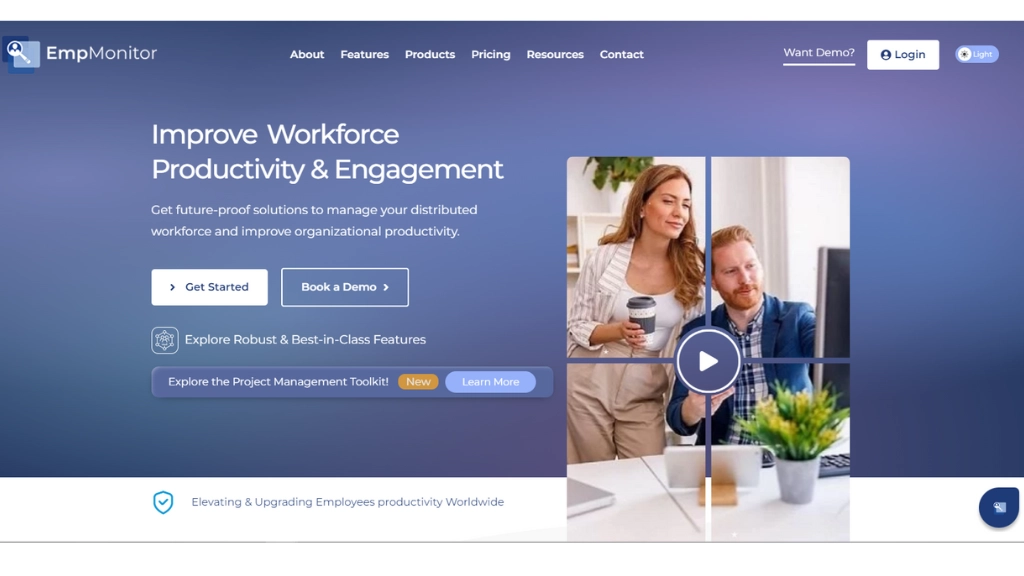You entered your office, and your employees gave their time off request to you. Are you tired of managing such requests? Do not worry anymore, as there is a solution to your problem.
In fact, one of the most common queries managers are facing nowadays is how to manage day off requests from employees and new hires. It is hard to say no to such requests as it may cause dissatisfaction in employees that would result to lower work engagement.
However, it is managers’ responsibility to manage the furlough request and maintain a high overall productivity rate.
In this blog, we will walk you through the types, benefits, and what you should include in your day off policy.
Hit ‘Play’ Button & Tune Into The Blog!
What Is The Time Off Request?
A time off request or request time off is a written request from employees to their higher authorities or supervisors to take a day off or more, for a specific period of time. Granting time off is a dual win – a boon for employees fostering work-life balance and heightened engagement, and a strategic move for employers amplifying overall productivity of employees. It’s the vital equilibrium that transforms a rested workforce into a powerhouse of efficiency.
There may be multiple reasons for your request, but taking permission might come up with a pile of paperwork if your company relies on paperwork.
Additionally, leave of absence could be either paid time off(PTO) or unpaid time off, depending on the company’s policy. In the case of PTO, employees would get their pay when they are on leave. On the other hand, for unpaid time off, employees won’t be getting any paid compensation during their absence at workplace.
To better understand your employees’ leave fall under which category, update yourself with different types of time off request.
Types
- Medical Leave
The leaves provided to the employees during sickness are medical leaves. Although the majority of firms mention paid sick leave as part of employees’ benefits, in some special conditions paid medical leave can vary widely between employers due to their company’s policy.
- Vacation Leave Request
An employee requests for leisure leave in case of taking a break from work or rest. For such leaves eligibility and compensation vary by employer. Companies exhibit varying policies concerning paid vacation leaves. It’s crucial to familiarize yourself with your employer’s specific guidelines on time off in lieu to ensure accurate understanding and adherence to their established procedures.
- Paternal leave
This type of leave is provided to the employees to take time off work after the birth or adoption of a child. It’s a crucial benefit in fostering family bonding. Policies differ among companies, with durations and pay varying. Understanding your employer’s paternal leave policy is essential for navigating this important time for both the employee and their growing family.
- Emergency Leave
Emergency leave provides employees with immediate time off for unforeseen personal crises. Whether it’s a family emergency, health issue, or unexpected circumstance, this leave allows individuals to address urgent matters.
Now that you are aware of how you can categorize employee leaves, you should also upgrade the format of applying for days off.
What Should You Include In the Time Off Policy
Before implementing your PTO policy, it is vital to review the points your company is adding to the request time off guidelines. Definite rules and policies should be added to bridge miscommunication gaps and misunderstandings.
A standard time off request guideline may include:
Rules For Requesting Time off
If you have not switched to an automated employee time off tracking software yet, then we recommend you opt for a work from home time tracker software for your workforce.
Such software helps you to get rid of manual tracking and upgrade your employee management and time off requests. The software prevents you from the paperwork chaos, automatically updates the day and time off, and streamlines your workforce-related queries.
While upgrading your policies and implementing new guidelines, it is essential to communicate with your team members, as it helps you break all the miscommunication gaps and build a bridge of trust and transparency.
When employees can or cannot ask for time off
Before your employees apply for leave, make sure to make them accustomed to the company’s period of leave approval and the day off calendar.
Fostering such little changes while creating the guidelines will prevent you from a shortage of employees during high business volumes and busy days.
You can consider informing your workforce in advance about the time off blockage and time off request management and approval period to avoid mixed feelings amongst employees.
Prior Notice Before Applying For Leaves
On an average basis, organizations prefer to update their database 10-12 days before going on leave, unless it is an emergency.
You can also opt for fixing a deadline for leave application each month.
For illustration purposes, let’s consider that you have set the 15th of each month as the last date for your employees’ time off application for the adjacent month.
Such changes make your employees punctual and responsible towards their deadlines and responsibilities, as well as provide you the flexibility to plan the upcoming month’s schedules.
How Often Employee Can Make Time Off Request
The employees want to take advantage of their days off as much as possible. But as an employer, it is your responsibility to teach the workforce when and how to request time off.
To avoid any partiality and envious feelings among other employees, you can set a rule of thumb asserting how many furloughs an employee can ask for based on your calendar.
Considerations That Are Specific To Your Business
Every business is unique in its own way and considers specifications according to the same. Therefore, before blindly following any organization’s policy, you should consider your specifications to design time off requests that may not hinder your productivity.
Many business leaders are opting for workforce management solutions and utilize software like EmpMonitor to achieve better employee vacation tracking and engagement .
EmpMonitor- Workforce Management Software
EmpMonitor is an ideal software for tracking employee time off and optimizing your workforce management. It is a comprehensive software for companies that have lent a helping hand to improve overall productivity rates and nurture work-life balance.
The software offers employers an array of features, with its cloud-based leave management system.
Following are some of the vital features of EmpMonitor:
Time Tracking
The software helps managers steer clear of the inconvenience of manual time tracking. It automatically starts monitoring employee work time immediately after they log in to their system and gets accurate and real-time data about the employee.
EmpMonitor tracks employee’s idle time, active time, and office time. Along with that, it can also help you to monitor paid time off or leave request from employees. Monitoring your staff time based on such parameters can provide many day-to-day advantages and help in optimizing the efficiency of your workforce.
Attendance Monitoring
EmpMonitor aids managers and employers in monitoring the attendance logs of the workforce. It provide the benefits of employee attendance tracker.
The software maintains accurate data on employee attendance and leaves. It helps in streamlining the work and provides the mobility to pay attention to other tasks. It also lay outs accurate data and reports on employee clock-in and clock-outs, and leaves. Employees can apply for leaves using EmpMonitor to request paid time off.
Productivity and Engagement
It is essential to observe workforce fruitfulness and engagement as it is an essential factor in analyzing a firm’s productivity.
EmpMonitor helps you improve the utmost productivity rates as you unfold your hands-on comprehensive reports on productivity, unproductivity, and more to optimize your organization’s ROI rates.
Data Security:
The software ensures data security and considers it the utmost priority for any company.
EmpMonitor cares for every freelancer activity and makes sure there is no double-dealing of your organization’s data.
Additionally, EmpMonitor also exhibits assistance in the following terms:
Real-time Insights: EmpMonitor’s co-existent real-time insight offers data so that managers can:
- Identify high and low-performing freelancers
- Strategize for feats of strength.
- Provides reports in Kanban Boards and Gantt Charts for better understanding and visibility.
User tracking: Time tracking software also provides the employer’s leverage of:
- Freelancer behavior
- Web History access
- Retrieve browsing history.
Project and Team Management: EmpMonitor provides extensive clarity project management of the team, which assists you in:
- Tracks work progress
- Keep track of project deadline
- Track the time spent on tasks
- Assign and manage tasks with ease.
Read More
How To Manage Time Off Requests For Payday + Template Format
Why Do We Need Workforce Management Solutions To Grow?
Benefits Of Having An Employee Attendance Tracker
How Can You Improve Productivity Of Your Employees?
How To Implement A Fair Unpaid Time Off Policy?
Benefits of giving time off to employees
Providing a day off to employees benefits the administration in the following ways:
- Assists in improving employee retention.
- Gives a boost to workforce morale.
- Foster the equilibrium between work and life.
- Increasing the productivity rate alongside employees starts seeing you as a fair employer and manager.
Final Words
Providing a day off to employees can be a challenging task for you while keeping the productivity rate high. But, without any doubt, you will come across many such scenarios during the management of time off requests. To overcome all such scenarios, take advantage of software like EmpMonitor to streamline your administration and get ahead of your competitors.
So now it is the time to get the ball rolling by streamlining your workforce’s time off and developing the day off policy.
Remember that each employee is unique and transparency is a go-to solution for managing the workforce. It is equally important to be comfortable in the environment you set up, as managing employee and time off requests is a critical task to perform.
Hence, the policies should be clear and easy to implement. Do not be afraid with the path of the right strategies and confidence, you can manage requests without being biased.













